The document outlines the process and best practices for test case development, emphasizing the importance of documenting testing strategies, designing effective test cases, and ensuring comprehensive coverage of application requirements. It covers techniques for test design, types of test cases, test data management, and the significance of a requirement traceability matrix (RTM). Additionally, it reviews guidelines for writing effective test cases and when to automate them to enhance the testing process.


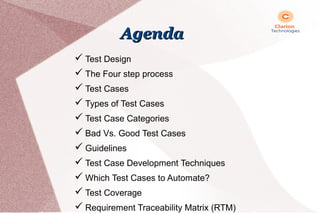
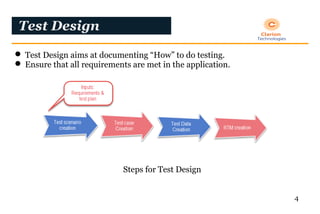
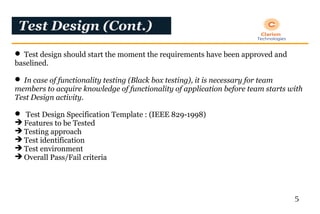



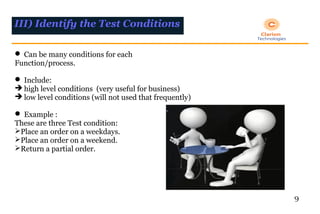


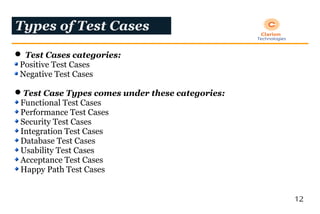





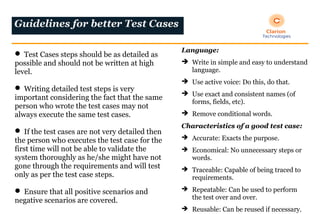
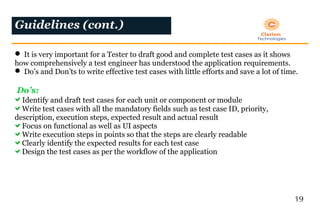


![22
Test Data
Test data is the data that is used while testing of an application.
In order to test a software application you need to enter some data for testing most
of the features. Any such specifically identified data which is used in tests is known as
test data.
Effectiveness of Test Cases is depends on the use of correct Test Data while testing.
Two types :
Positive Test Data.
Negative Test Data.
Test data can be made available in two ways:
Simulated - Data derived by considering Requirements.
Provided by client- data copied from Live DB [e.g. csv file].](https://image.slidesharecdn.com/testcasedevelopment-170106135801/85/Test-case-development-22-320.jpg)
![23
Test Data (Cont.)
Always verify the test data before re-using in regression testing.
Design test data considering following categories:
No data
Valid data set
Invalid data set
Illegal data format
Boundary Condition data set
It is not possible to check test case with all data values, Testers need to ensure all
possible combination is covered so following techniques used:
Equivalence Class Partitioning [ECP]
Boundary Value Analysis [BVA]](https://image.slidesharecdn.com/testcasedevelopment-170106135801/85/Test-case-development-23-320.jpg)













